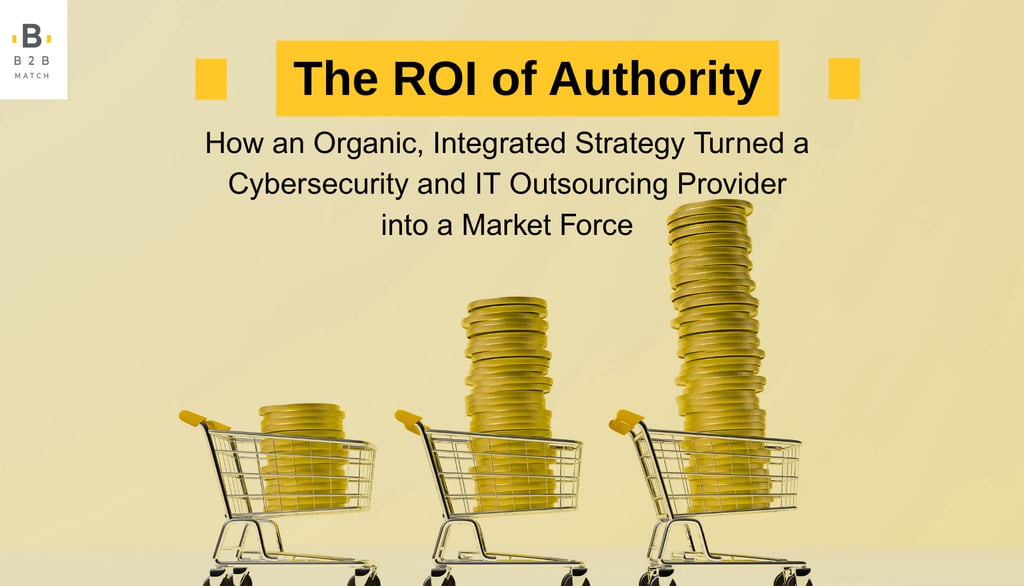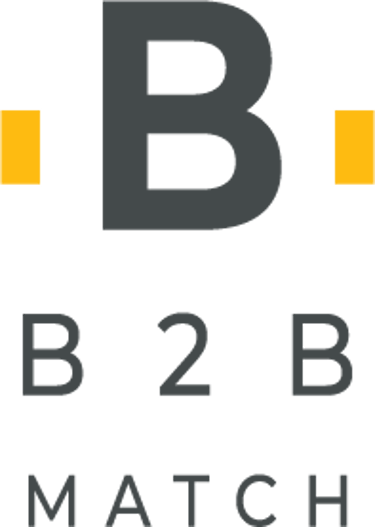The ROI of Authority: How an Organic, Integrated Strategy Turned a Cybersecurity and IT Outsourcing Provider into a Market Force
3 min read


1. Company Background
Cybrella Systems is an Israeli company headquartered in the Science Park in Rehovot, adjacent to the Weizmann Institute of Science. Founded in 2014 by veterans of elite cyber and intelligence technology units, Cybrella specializes in providing Managed IT services and outsourced Security Operations Center (SOC) support. The company delivers real-time monitoring, threat detection, and incident response for mid-to-large organizations in finance, healthcare, manufacturing, and high-tech.
Cybrella had a strong technical reputation: average incident response time under seven minutes, a false positive rate 35% lower than the industry average, and a team of analysts with extensive international experience. Yet, brand awareness outside the existing client circle was minimal, and organic growth had plateaued.
2. The Challenge
In early 2023, leadership noticed a decline in inbound organic leads and reduced effectiveness of outbound activities. During an executive meeting, several questions came up:
Why aren’t we recognized as a leading player?
Can trust really be built through organic methods alone?
How long until results appear, and will the investment pay off?
Internal resistance:
The CFO worried about ROI compared to paid advertising. The VP of Sales argued that his team needed to chase deals, not wait for leads. The CMO stressed that the issue was not lead volume but lead quality — most opportunities were cold, lacked understanding of Cybrella’s value, and led to longer sales cycles with low close rates.
3. The Process
Build Phase (Months 1–2)
Market and competitor analysis – Benchmarking against local and international IT and cybersecurity outsourcing providers, mapping industry-standard KPIs such as lead growth rates, sales cycle length, and close ratios.
Message architecture – Crafting narratives tailored to CEOs, CMOs, CIOs, and CISOs.
Infrastructure setup – Optimizing LinkedIn profiles for the company and key executives, implementing CRM tagging and automation, producing research-based Anchor Content titled Managing Cyber Risk Through Outsourcing.
Measurement framework – Integrating systems to track engagement, lead flow, and intent signals.
Activation and Optimization (Months 3–8)
Content distribution – Articles, short videos, webinars, how-to guides, industry commentary posts, and event recaps.
Engagement in professional groups – Ongoing presence and value-driven discussions in LinkedIn cybersecurity and IT communities.
Sales alignment – Any lead showing engagement received a follow-up within 48 hours.
4. SDR Integration – The Human Connection
The Sales Development Representative (SDR) joined as soon as the system went live, working across three channels in parallel:
LinkedIn – Direct outreach to people engaging with content, personalized connection requests, and conversation starters.
Email – Customized follow-up emails referencing specific content consumed.
Phone calls – Both warm calls (following content engagement) and cold calls to strategic targets.
Execution details:
The SDR received real-time alerts in the CRM whenever a high-intent action was taken.
Phone calls were made within hours of engagement to maintain relevance.
All call outcomes were logged in the CRM, feeding back into content planning.
Weekly sync meetings were held with marketing and sales leadership.
Impact:
Time from first touch to meeting decreased by 28%.
Conversion from lead to meeting improved by 18%.
5. Missteps Along the Way
Not everything went smoothly. In month four, a series of webinars on real-time incident response drew disappointing attendance because they clashed with a major industry conference. The budget had to be reallocated, and scheduling processes were improved.
In the SDR program, some calls in the first two weeks were made before the lead had enough engagement, resulting in short, ineffective conversations. A gating rule was added so only leads with a minimum engagement threshold received phone outreach.
6. What Was Brought In-House
To maintain independence and avoid over-reliance on external partners, several functions were transitioned to internal teams after training:
Managing client WhatsApp groups for key accounts.
Producing the monthly cybersecurity newsletter.
Basic CRM follow-up by the internal sales team.
Internal staff received hands-on workshops and playbooks to ensure consistency.
7. What Remained Outsourced
Certain high-skill, high-efficiency functions stayed with the external partner because outsourcing remained more cost-effective than hiring in-house:
Precision organic LinkedIn campaign management.
Research-based Anchor Content production for global audiences.
Continuous monitoring of engagement and triggering SDR follow-up in real time.
8. Benchmark vs. Actual Results
Industry benchmarks for IT & cybersecurity outsourcing:
Organic lead growth: +10–25% in year one
Sales cycle reduction: 10–20%
Close rate increase: +8–18%
ROI: 6–9 months
Cybrella’s results:
Organic lead growth: +22% (upper range)
Sales cycle reduction: 17% (upper range)
Close rate increase: +15% (above average)
ROI achieved in 6.5 months (faster than median)
Note: Cybrella is a fictional name used for illustration. While company identifiers are anonymized, the metrics and methods reflect real-world Match B2B projects and achievable results in the IT and cybersecurity outsourcing sector.
Address
4/12 Gershon Sharshevski,
Mazkeret Batya, Israel


